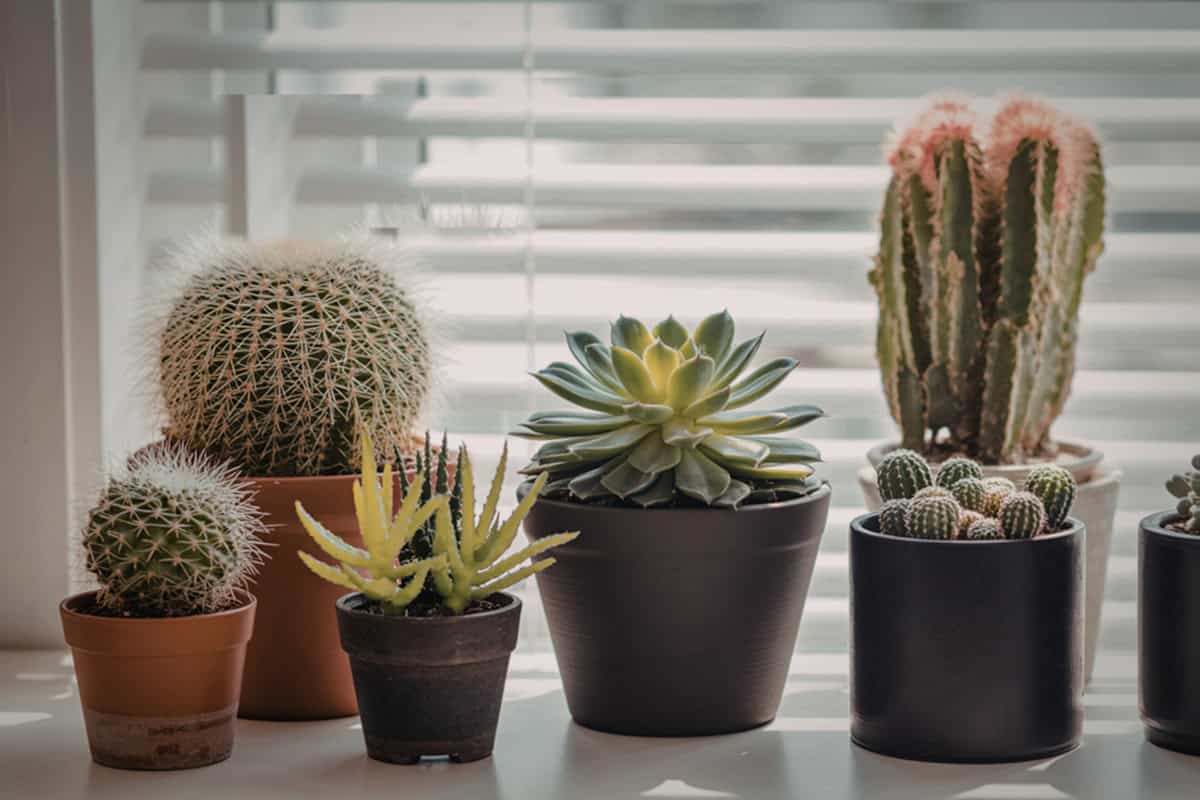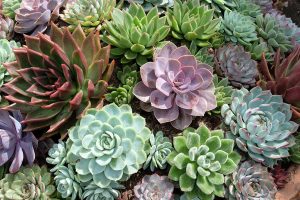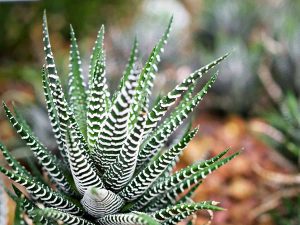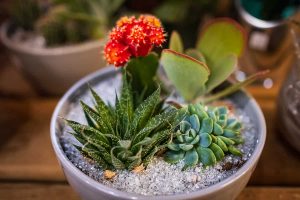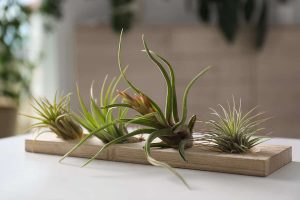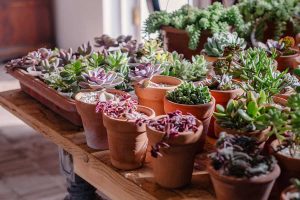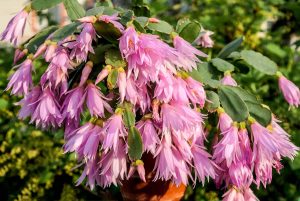Limited sunlight doesn’t mean limited plant choices. There are plenty of succulents that flourish without direct rays. Stick around to see 25 stunning low-light succulents worth growing.
Table of Contents
- 25 Common Low-Light Succulents
- Haworthia fasciata (Zebra Plant)
- Sansevieria trifasciata (Snake Plant)
- Gasteria
- Aloe vera
- Sedum morganianum (Burro’s Tail)
- Crassula ovata (Jade Plant)
- Echeveria ‘Lola’
- Kalanchoe tomentosa (Panda Plant)
- Hoya carnosa (Wax Plant)
- Peperomia graveolens (Ruby Glow)
- Euphorbia milii (Crown of Thorns)
- Senecio rowleyanus (String of Pearls)
- Senecio radicans (String of Bananas)
- Lithops (Living Stones)
- Stapelia gigantea (Carrion Flower)
- Graptoveria
- Adromischus cristatus (Crinkle-Leaf Plant)
- Portulacaria afra (Elephant Bush)
- Rhipsalis baccifera (Mistletoe Cactus)
- Euphorbia tirucalli (Pencil Cactus)
- Dischidia nummularia (Button Orchid)
- Sempervivum tectorum (Hens and Chicks)
- Kalanchoe blossfeldiana
- Othonna capensis (Little Pickles)
- Anacampseros rufescens
25 Common Low-Light Succulents
You’d be surprised how many succulents don’t need direct sun. There are all sorts of shapes and textures out there that’ll liven up rooms with less-than-ideal lighting.
Haworthia fasciata (Zebra Plant)
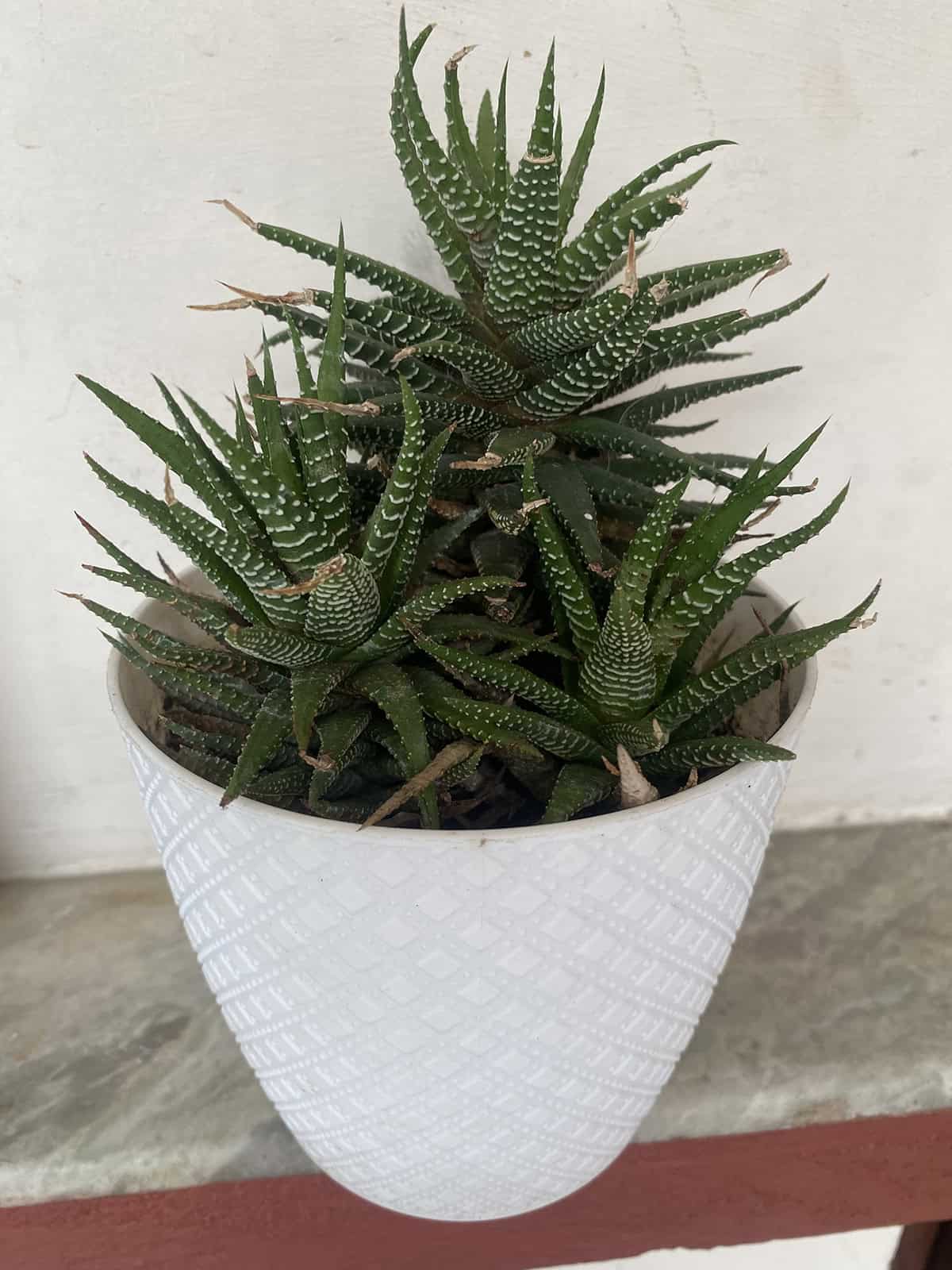
With bold white stripes across stiff, dark green leaves, Haworthia fasciata really pops in any indoor spot. It’s small enough for a desk and doesn’t mind lower light at all.
Let the soil dry out completely before watering—seriously, it hates wet feet. Zebra Plant rarely outgrows its pot, so it stays tidy. Good drainage is a must. Occasionally, mealybugs might show up on older plants, so keep an eye out.
Sansevieria trifasciata (Snake Plant)
Snake Plant is tough as nails, handling dim corners and a bit of neglect. Tall, upright leaves—usually dark green with lighter bands—make it a classic pick.
It’s also known for cleaning the air. Only water when the soil is bone dry. Plus, it’s fine with low humidity and can handle both home and office life without fuss.
Gasteria
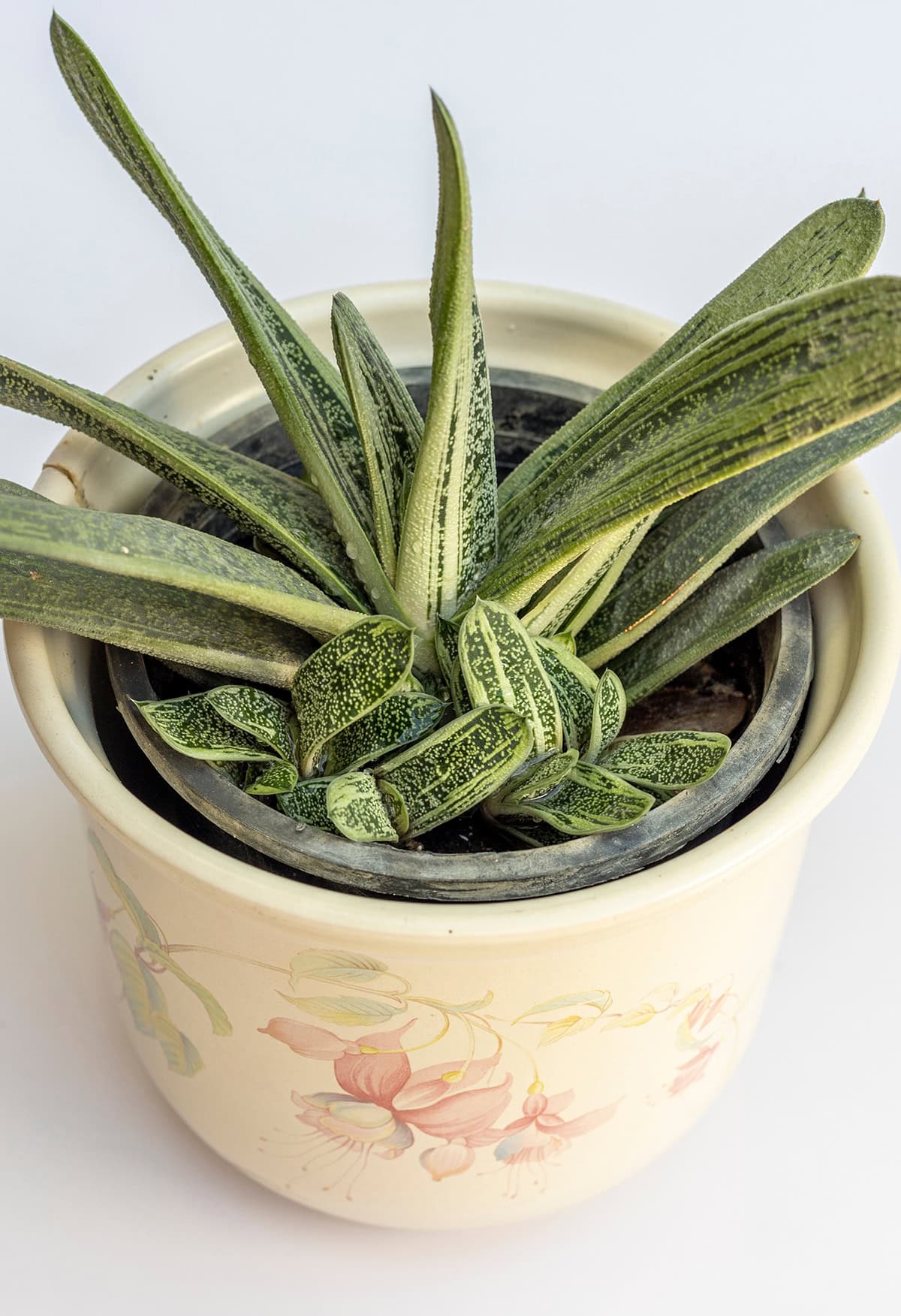
Gasteria’s thick, tongue-shaped leaves come with spots or streaks, giving it a muted look. Too much sun and the foliage can blush red, so indirect light is best.
Prefers sandy, well-draining soil. Doesn’t need frequent repotting or much fertilizer. If you’re new to succulents, Gasteria is forgiving—just don’t drown it.
Aloe vera
Aloe vera is flexible—filtered sun or gentle shade works just fine. Those thick, fleshy leaves store plenty of moisture, so you can go a while between waterings. And yes, it’s the same plant people use for skin soothers.
It’ll grow in a small pot, but a bigger one lets it stretch out. Artificial light is okay, though a bit of sun speeds up growth. Always use fast-draining soil to keep rot at bay.
Sedum morganianum (Burro’s Tail)
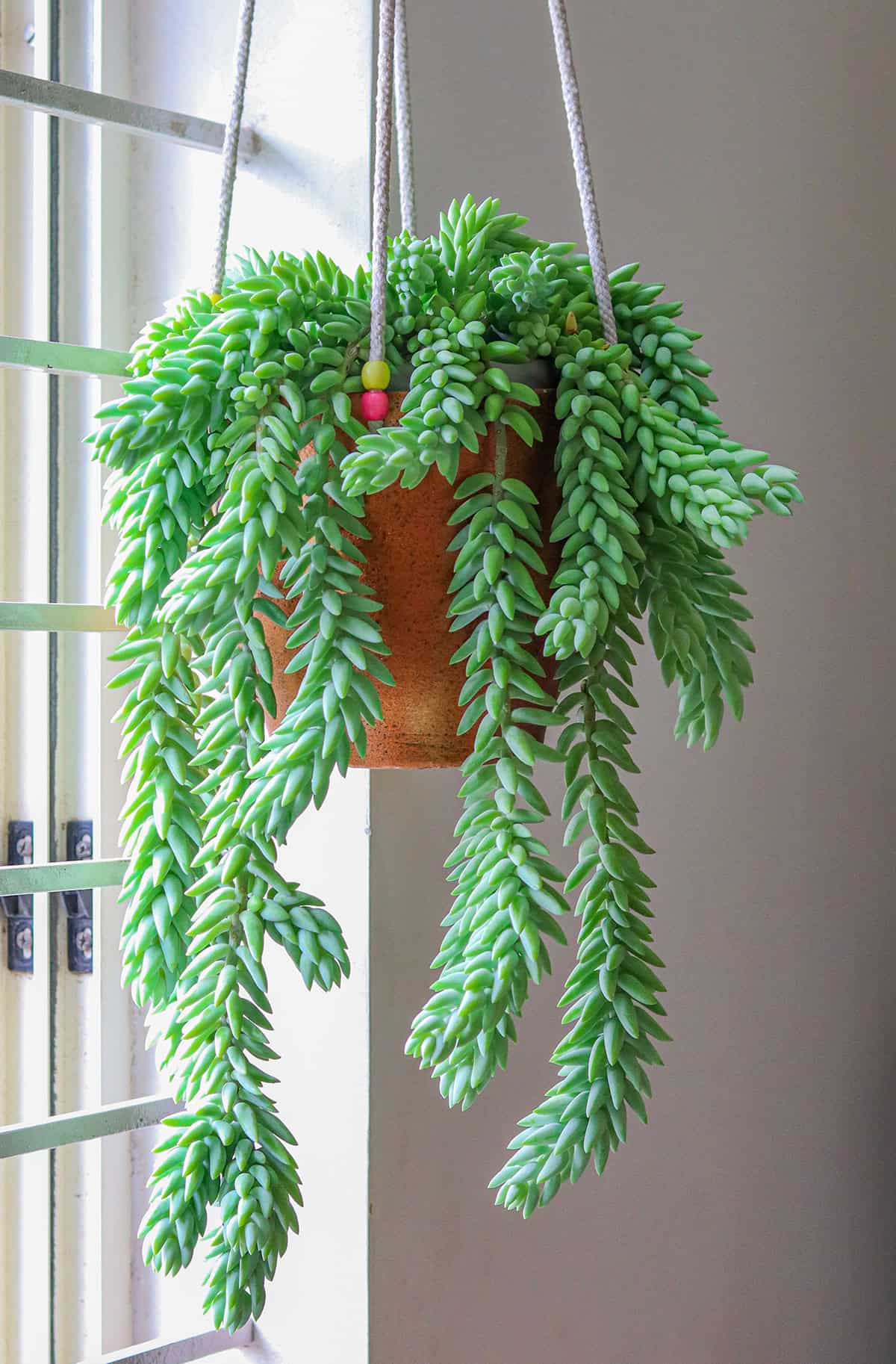
Sedum morganianum trails long, bead-like leaves that spill over pot edges in a soft, blue-green cascade. Loves bright, indirect light but doesn’t demand strong sun.
Water sparingly and let the stems hang from shelves or baskets for best effect. The leaves are delicate and break easily, so be gentle. Drainage holes are non-negotiable to avoid rot.
Crassula ovata (Jade Plant)
Jade Plant’s thick, glossy oval leaves and woody stems give it a miniature tree vibe. It’s happy with minimal fuss and adapts to lower light.
Hold back on watering, especially in winter. These can live for ages in the same spot. A little rotation now and then helps both sides get light. Some folks say it brings good luck—who knows?
Echeveria ‘Lola’
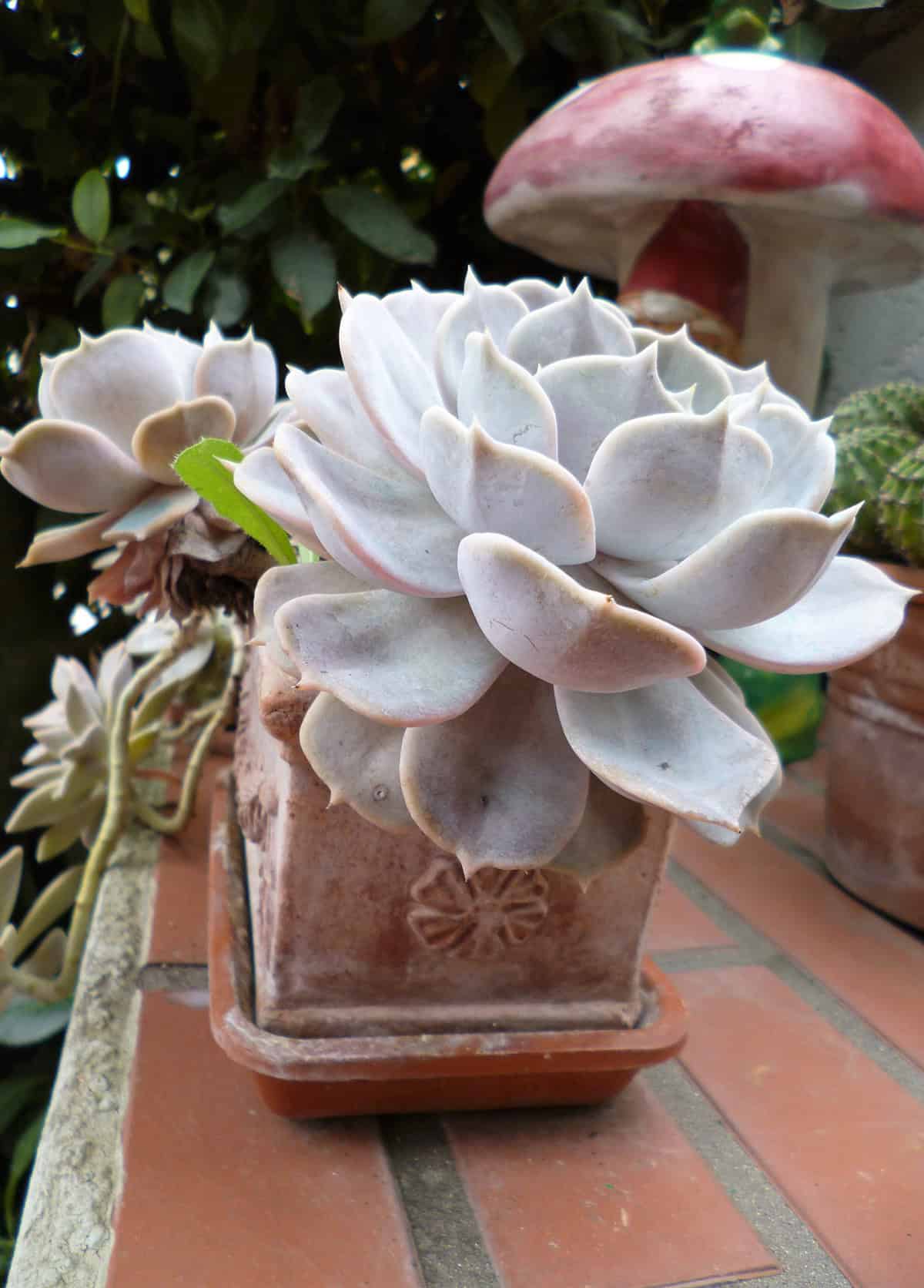
‘Lola’ shows off silvery-lavender to pale green rosettes with sharp tips, giving it a sculpted look. It’s fine with bright indirect light and a touch of sun.
Keep it out of deep shade for compact growth. Works well in trays or dish gardens. Let the soil dry out before watering again, and watch for rot if humidity lingers.
Kalanchoe tomentosa (Panda Plant)
Panda Plant’s velvety, gray-green leaves rimmed in brown are soft to the touch and stand upright. It’s easygoing in low-light interiors.
Sandy, dry soil is best. The fuzzy leaves help it hold water, so you can forget to water sometimes. If the stems get leggy, trim them back—it’s not shy about growing toward the light.
Hoya carnosa (Wax Plant)
Hoya carnosa has thick, vining stems and shiny, oval leaves—great for hanging baskets or high shelves. It’s a patient grower in low light and sometimes rewards you with fragrant blooms.
Let the soil dry out nearly all the way before watering again. It’ll grow slow in the shade but stays healthy. You’ll see more flowers with a bit of indirect sun.
Peperomia graveolens (Ruby Glow)
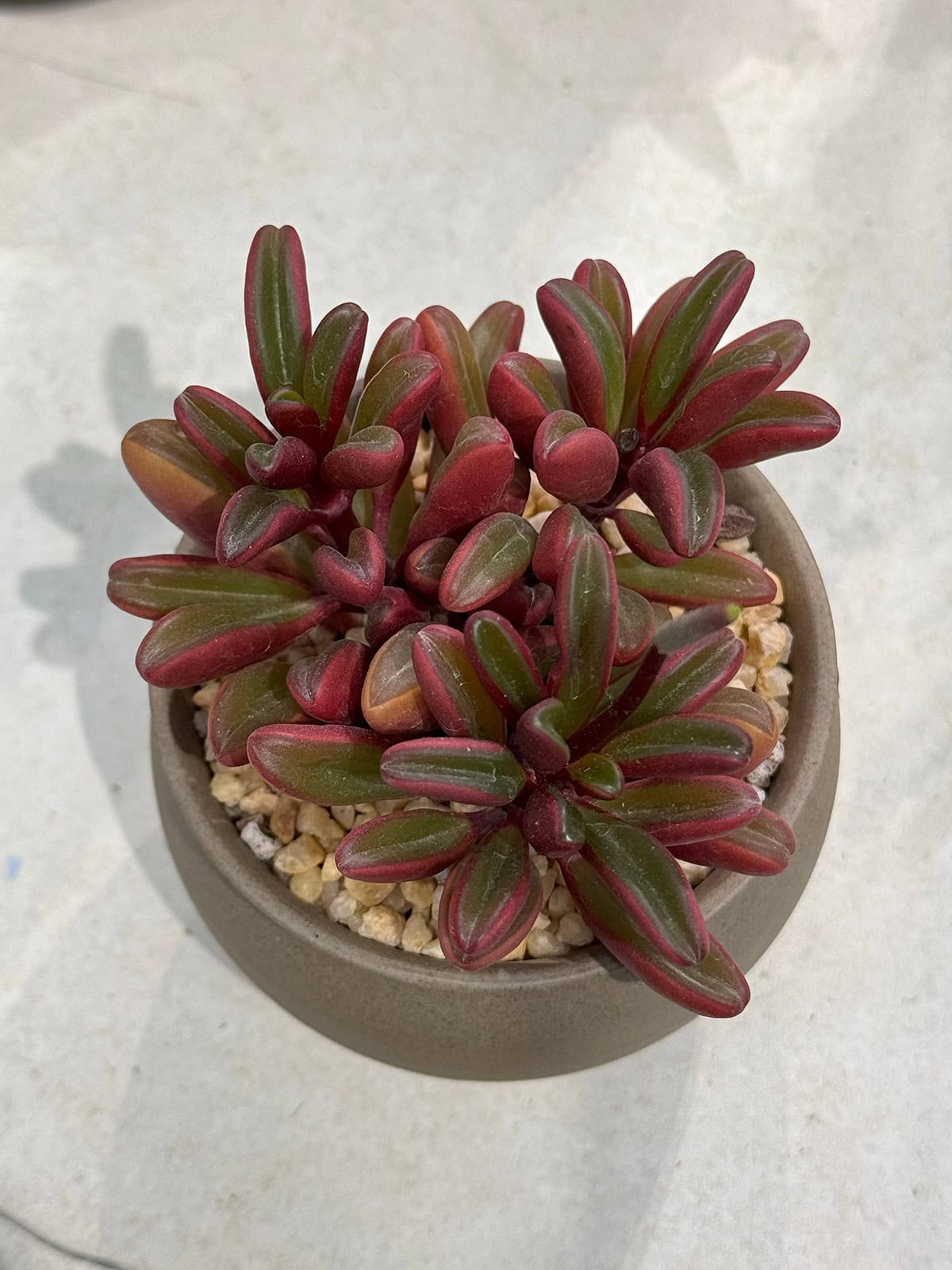
Peperomia graveolens is compact, with ruby-red undersides and canoe-shaped green leaves. It’s right at home in low to moderate light.
Small pots and dry, airy soil suit it best. Let the soil dry out between waterings. It’s rarely bothered by pests and shrugs off dry air.
Euphorbia milii (Crown of Thorns)
Crown of Thorns has spiky stems, thick paddle leaves, and bright little flowers at the tips. It gets by in moderate shade and doesn’t need full sun.
Be careful—the sap can irritate skin. Water sparingly and use loose, sandy soil. Cut back dead stems if you want to keep it tidy.
Senecio rowleyanus (String of Pearls)
String of Pearls features round, bead-like leaves on thin, trailing stems—perfect for hanging pots in filtered light or gentle shade.
Only water when the soil is dry. Too much moisture and you’ll get fungus. Stems can root where they touch soil, making the plant fuller. Prune to avoid legginess.
Senecio radicans (String of Bananas)
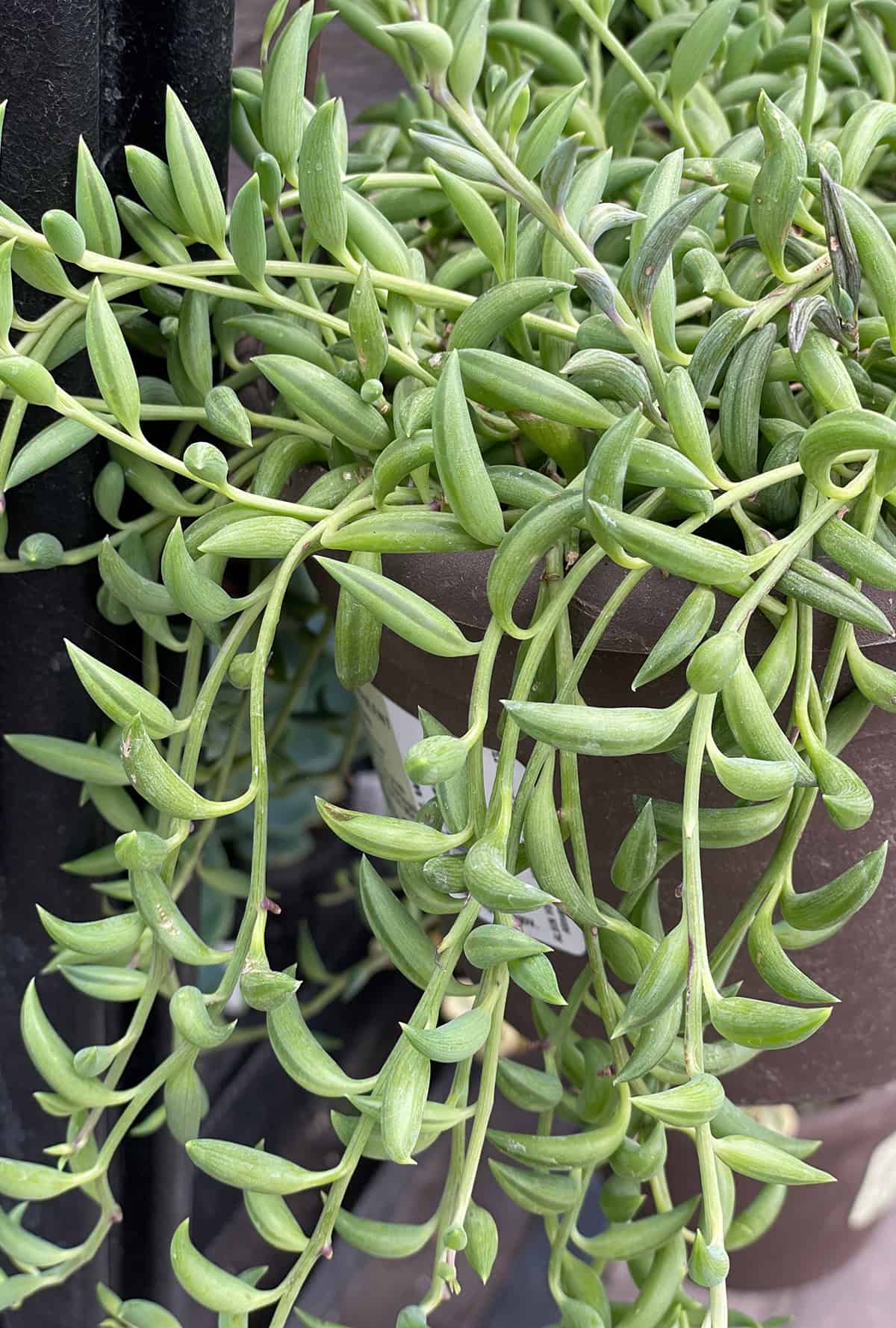
String of Bananas sends out cascading vines dotted with banana-shaped leaves. It’s happier in bright rooms but stays healthy away from direct rays, which is more than you can say for some trailing succulents.
Let the soil dry almost completely before watering. Shallow pots and good drainage are key. Give it a trim now and then to keep things neat and discourage pests. It grows fast when it’s happy.
Lithops (Living Stones)
Lithops look like tiny, split pebbles and blend right in with rocks. They’re at home on low-light windowsills where harsh sun won’t scorch them.
Water just a couple times a year for best results. Use a gritty, sandy mix to keep roots healthy. They’ll go dormant for months if kept cool and dry.
Stapelia gigantea (Carrion Flower)
Carrion Flower is known for its big, star-shaped blooms and, well, a scent that’s not for everyone. The thick, cactus-like stems don’t need much sun and handle shade well.
A shallow, wide pot works best. Keep the soil nearly dry most of the time. If you’re sensitive to strong smells, steer clear when it blooms.
Graptoveria
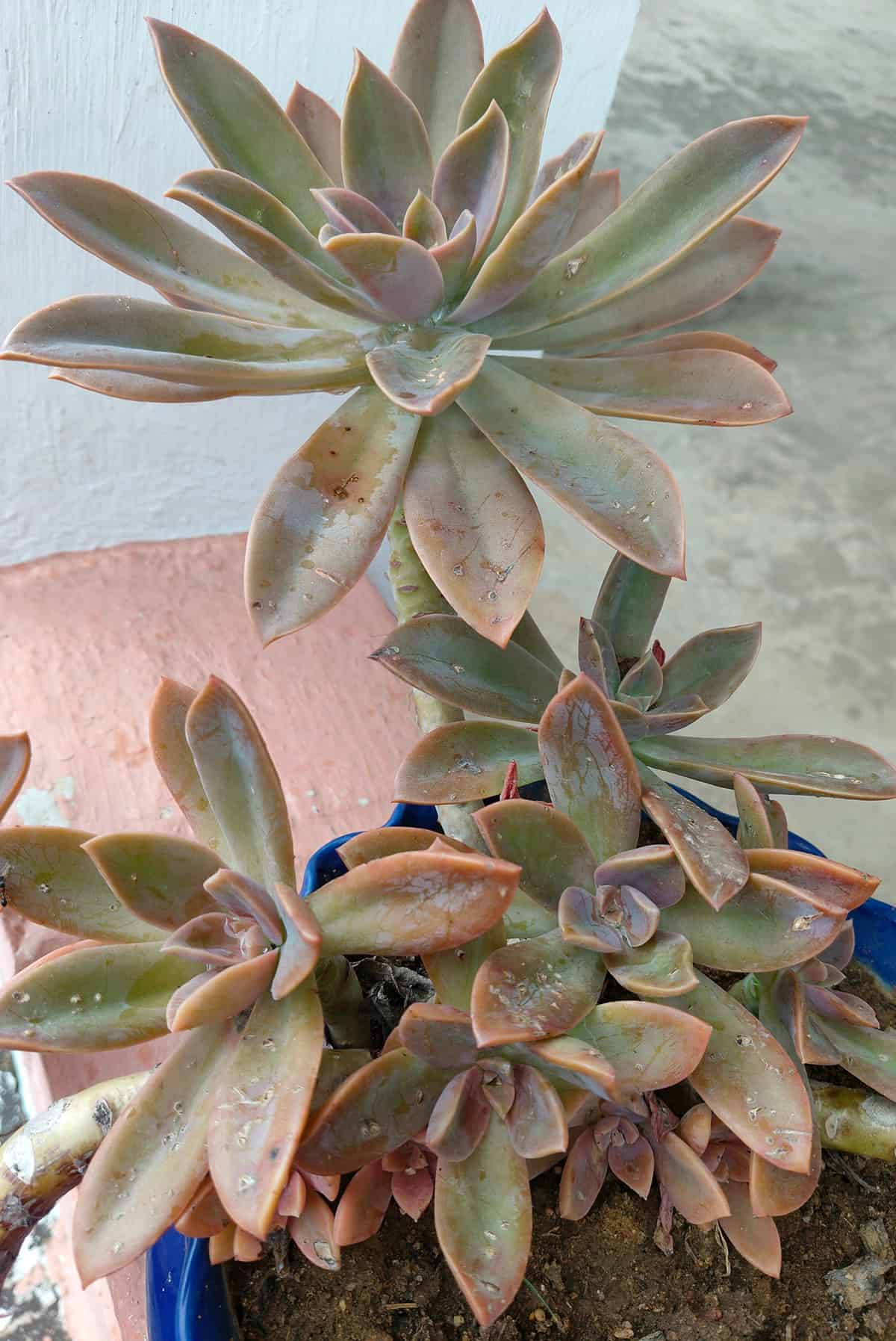
Graptoveria forms tight rosettes with thick, fleshy leaves in shades from pale blue-gray to lavender. It’s a hybrid that does fine in moderate shade and small window gardens.
Water is rarely needed—especially in colder months. Fast-draining soil is a must. Give the pot a turn now and then so it grows evenly.
Adromischus cristatus (Crinkle-Leaf Plant)
Crinkle-Leaf Plant has flat, wavy-edged leaves in bright green. The odd shape makes it easy to spot. It’s adaptable to moderate shade and doesn’t crave direct sun.
Wide-mouthed pots help with airflow. Try not to splash water on the leaves to avoid spots. It only needs occasional drinks, but drainage is crucial.
Portulacaria afra (Elephant Bush)
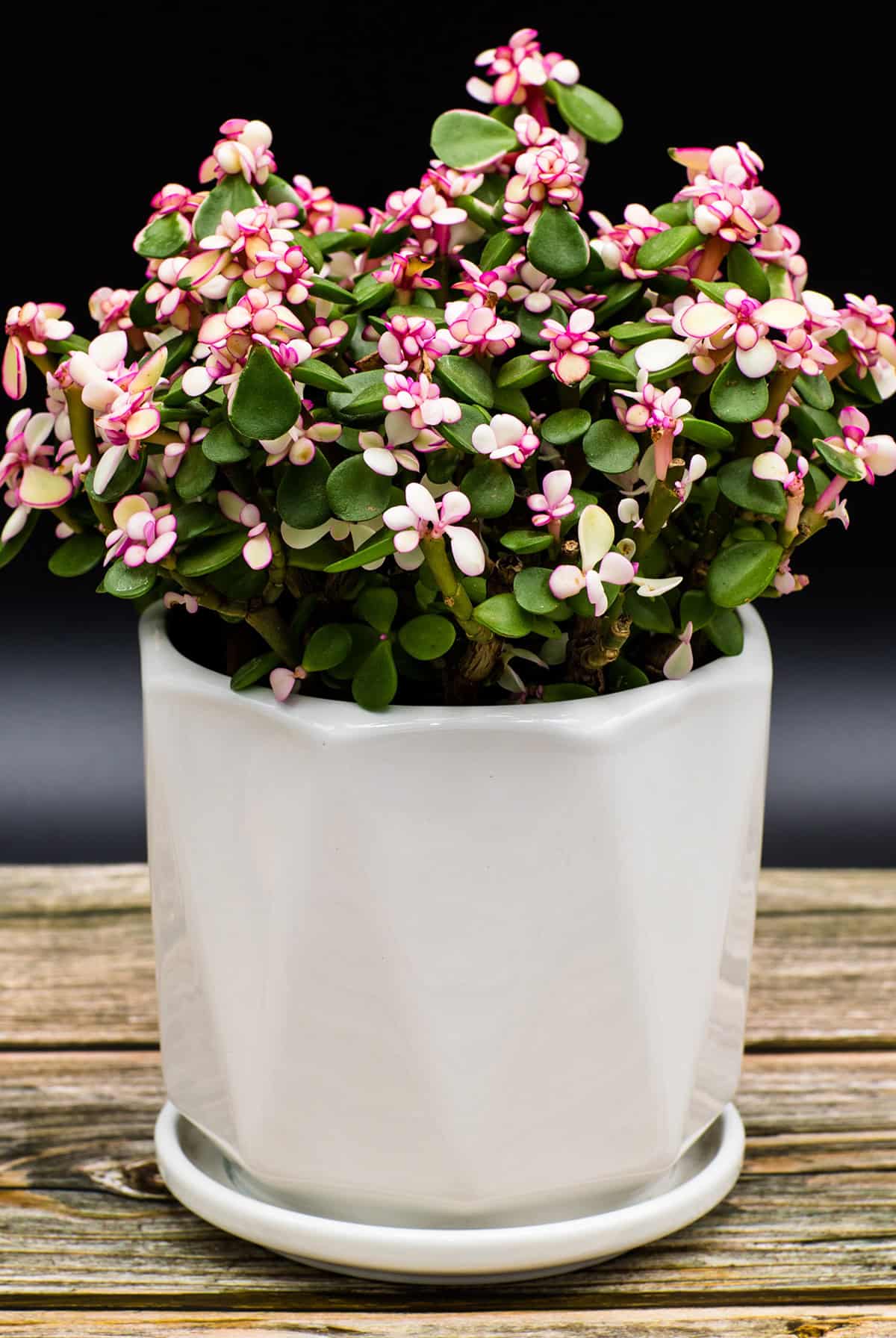
Elephant Bush has thick, oval leaves and firm, reddish stems. It usually grows upright but will trail if you let it. Best in bright, indirect light, but it’ll tolerate low light for a while.
Don’t let the pot get soggy. Prune to shape or remove leggy bits. It’s forgiving if you forget to water—just never let the roots sit in water.
Rhipsalis baccifera (Mistletoe Cactus)
Mistletoe Cactus has thin, hanging stems and tiny soft spines. Since it’s native to rainforests, it loves filtered or dappled light. Misting isn’t essential, but it can help with humidity.
Let the soil dry out a bit between waterings. It handles lower light better than most cacti. Only repot if the stems are bursting out of the pot.
Euphorbia tirucalli (Pencil Cactus)
Pencil Cactus is all vivid, green, pencil-thin stems and barely any leaves. Handle with care—the sap’s an irritant.
Just a bit of light keeps it looking sharp. Prune to control size and shape. Always use well-draining soil and let it dry out well between waterings.
Dischidia nummularia (Button Orchid)
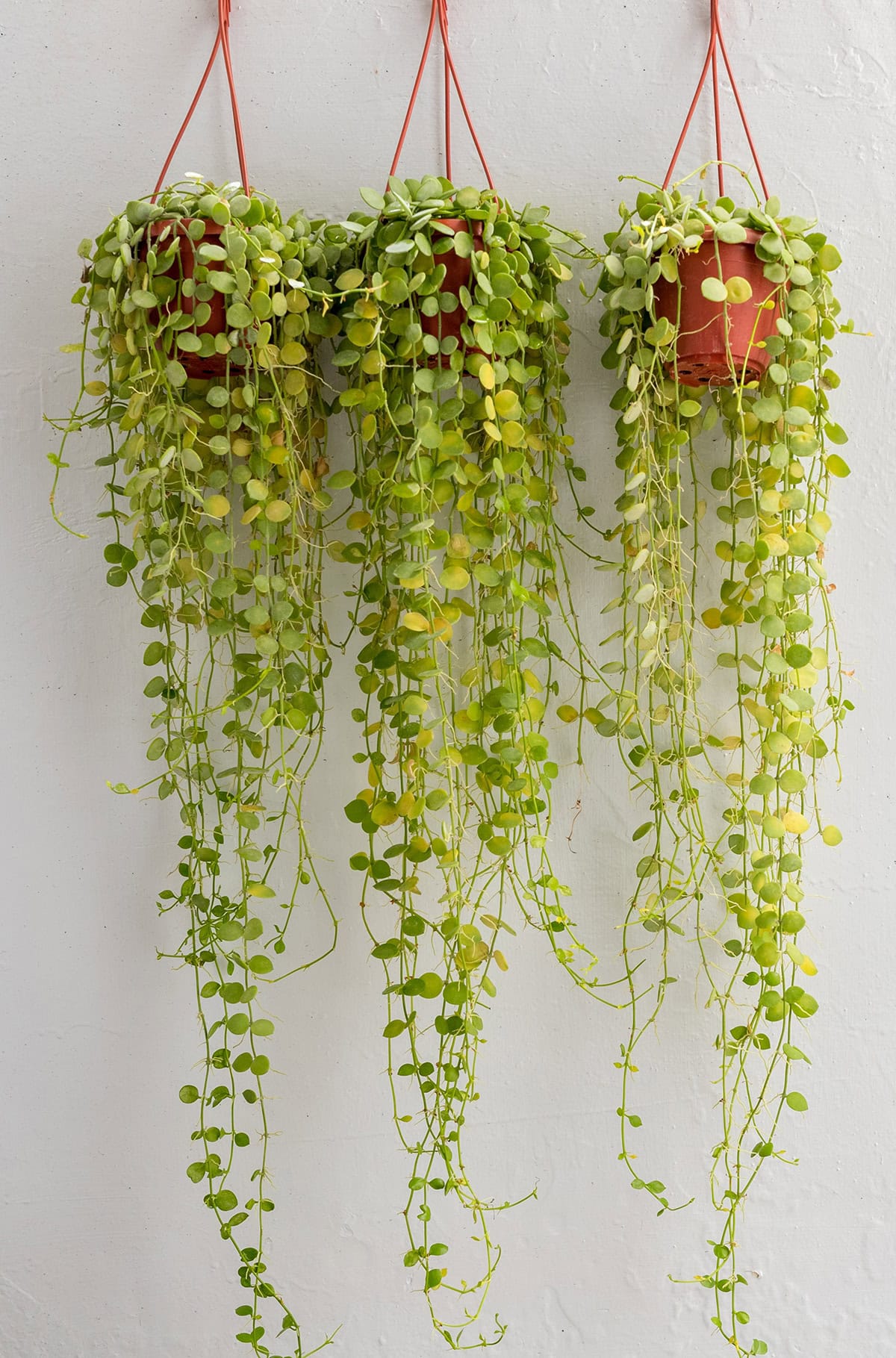
Button Orchid sends out long, trailing stems dotted with round, coin-like leaves. It’s comfortable in lower light and humidity. Unlike most succulents, it might climb or cling to nearby surfaces.
Rinse dust off the leaves now and then. Water sparingly, letting the potting mix dry first. Its compact growth is perfect for tiny pots.
Sempervivum tectorum (Hens and Chicks)
Hens and Chicks grow tight rosettes of pointed leaves, with smaller offsets clustering around. They’re tough, handling moderate shade or bright, indirect sun. If stressed, the leaf edges can show a bit of color.
Let water drain fully after each watering. Fertilizer is rarely needed. Cluster several in a single bowl for a lush look, and separate the babies if things get crowded.
Kalanchoe blossfeldiana
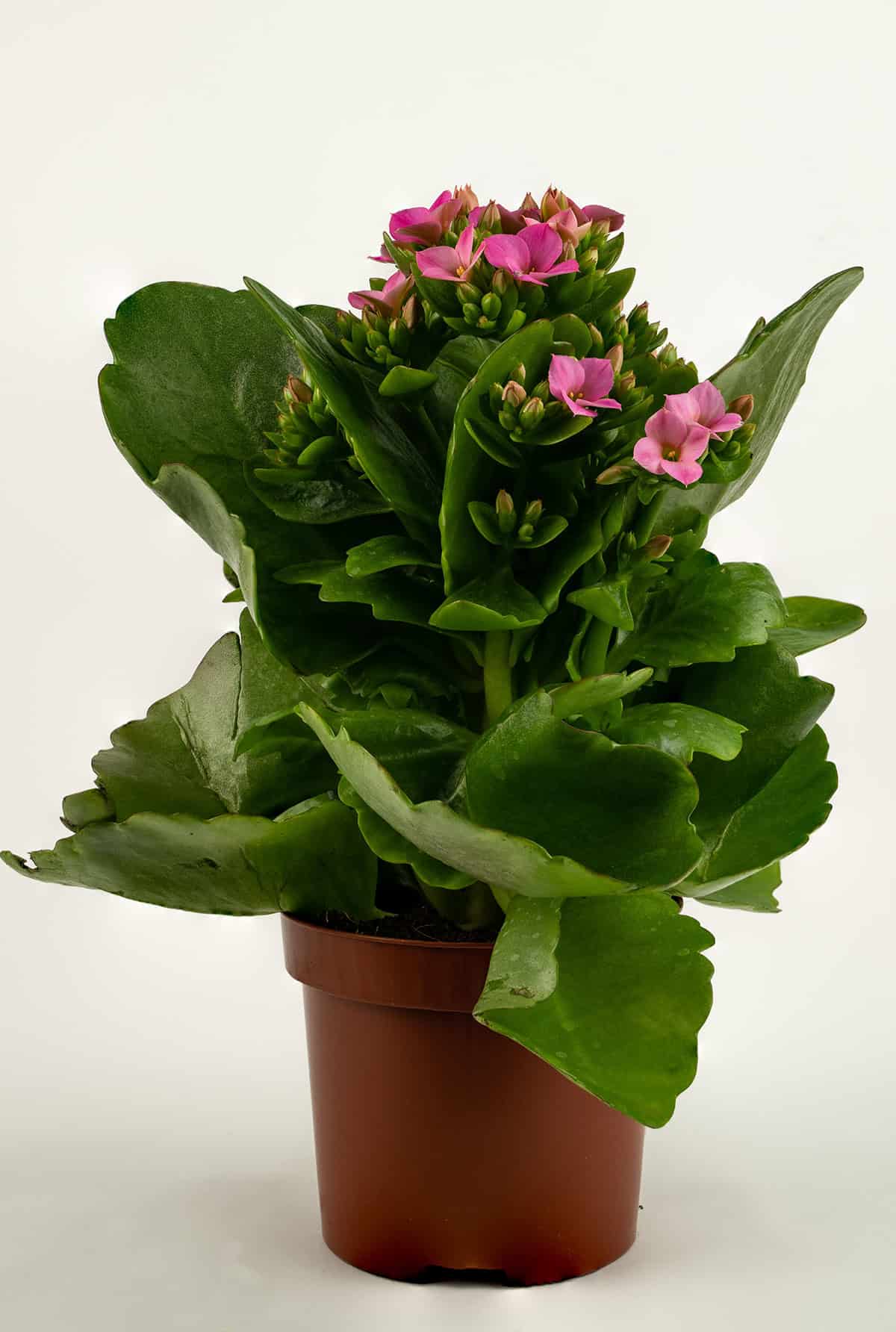
Kalanchoe blossfeldiana perks up any room with clusters of vivid flowers. Its thick, glossy leaves stay compact in low light and it doesn’t mind dry air or the occasional missed watering.
Use fast-draining soil and water thoroughly but not often. Pinch off faded blooms to keep it going. Fits easily on windowsills or tabletops.
Othonna capensis (Little Pickles)
Little Pickles trails with dense, blue-green, bean-shaped leaves. It’s content in low light and barely needs attention.
Water only when the soil is dry. Clip trailing stems for a neater look. Standard succulent mix in a small pot works just fine.
Anacampseros rufescens
This little plant forms low mats of pointy leaves, mixing green and deep magenta in a way that’s oddly striking. It grows at a slow, steady pace if you give it filtered light—never in a hurry, but always looking tidy.
Roots seem happiest in sandy, gritty soil, and honestly, it’s best to let things dry out for a bit before you water again. The compact size and splashy colors make it a fun pick for terrariums or a small pot on your desk.
